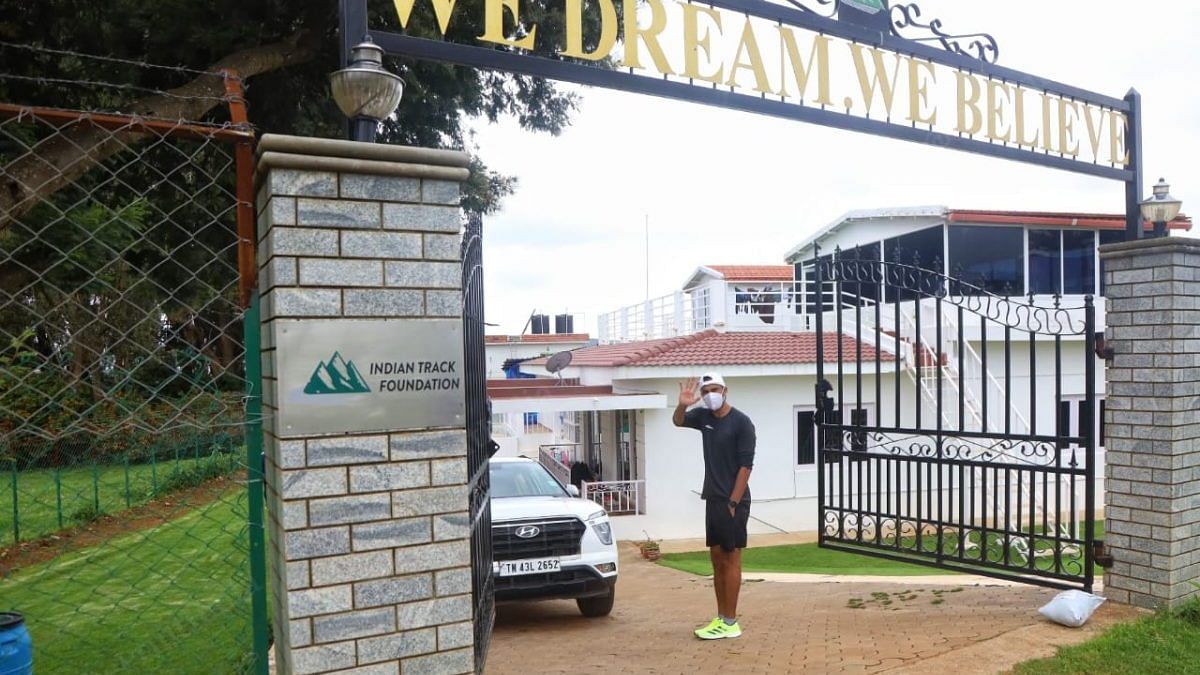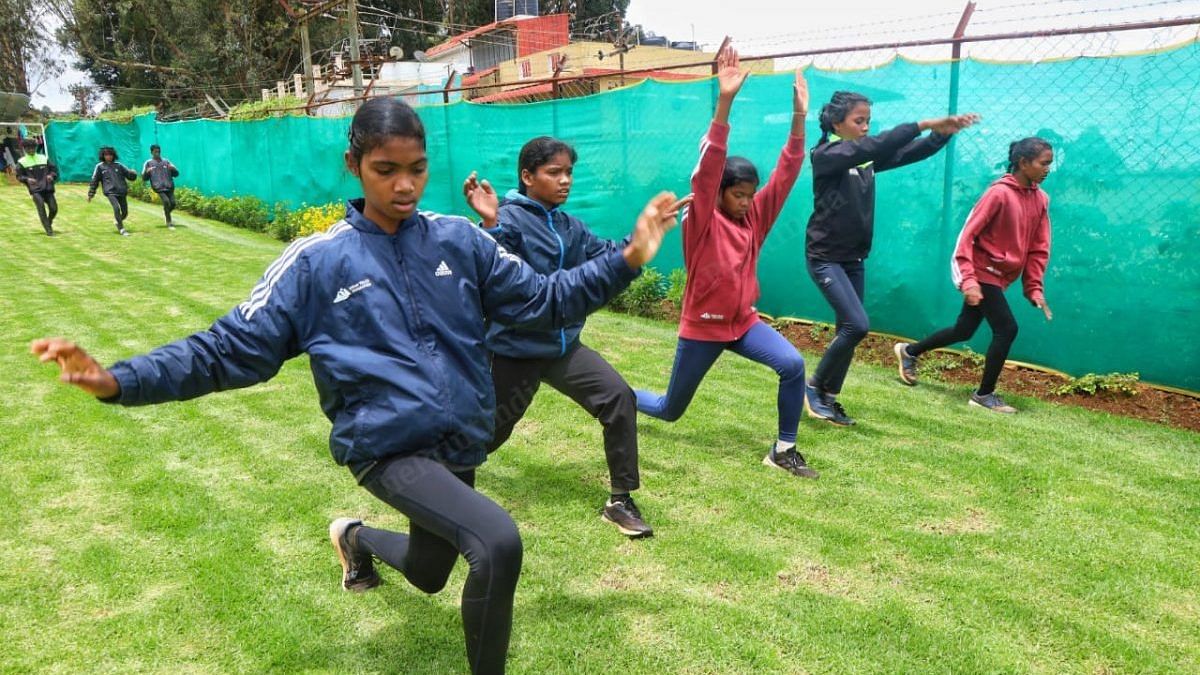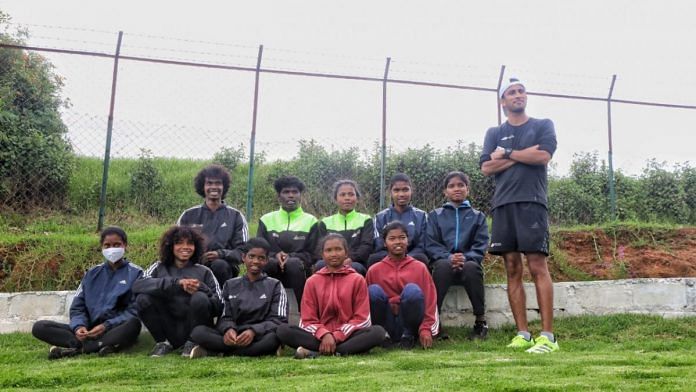Ooty: Karan Singh, 35, grew up in Gurguram and trained as a semi-professional athlete at Eugene, Oregon, the track town of the US, before knee injuries took their toll.
Now his life revolves around two states on the opposite sides of the country — Jharkhand and Tamil Nadu.
As his middle-distance running career fizzled out in 2012, Singh decided he would train athletes for the Olympics and scouted the country for potential runners — across Kerala, Maharashtra, Chhattisgarh, Jharkhand and Uttar Pradesh.
Having set up the Indian Track Foundation, a non-profit organisation to train runners, in Delhi in 2018, he finally zeroed in on potential athletes from Jharkhand.
Before long, he moved base to Ooty, the bustling hill station in Tamil Nadu.
So, why Ooty? Singh told ThePrint that high altitudes are good for middle and long-distance running and instrumental in helping athletes improve their timing. Their red blood cells increase and then it is easier to compete at sea level.
This dream to move away from the only life he knew in Gurugram was also based on the advice of his coaches in Eugene.
“My coaches there told me you need to become a monk if the dream is to create Olympic medallists,” he said.

Journey to a coach
The Indian Track Foundation in Ooty also happens to be coach Karan Singh’s home. He shares this home with his wife Sonam, two daughters and 14 athletes aged 11-16 who have been scouted from the interiors of Jharkhand — Kundpani, Latehar, Daltaganj and Gumla.
“We thought Jharkhand fit the bill because we wanted kids who had never run before,” Singh told ThePrint. “These kids aren’t just from the outskirts of Ranchi, but come right from the interiors of the state.”

The turning point that made Singh give up his running career came when he was at the national camp in Bengaluru.
Sitting in an inflatable ice bath usually used for recovery, Singh looked out of his hostel room and saw the best middle-distance athlete in the country using a slab of ice on his quads for recovery.
“At best, I was an average middle-distance runner. I looked out from my hostel room and saw the national champion, a far greater athlete than me was using ice-slabs on his quads,” he said. “I instantly felt this guilt and thought I should be in his place, and he in mine.”
In 2012, Singh realised that he would not reach the heights he wished to as a professional athlete and it was at this point he decided to move to the other side of the sport.
Wanting to create an ecosystem for running similar to Eugene, Singh started the Indian Track Club in Delhi, with many of his wards doing well at the state and national level. But not satisfied about working towards the Olympics, Singh then undertook various experiments to scout and train athletes, many times failing. However, all have been learning experiences in hindsight.
“Running is a very tough sport. It is extremely advanced across the world and right now we are only playing catch-up,” he said.
He explained that to do well at the junior and national levels was a different ballgame. And then to break onto the international arena, qualify for heats, semi-finals, finals and then be a medal winner is entirely different.
“For this, it is essential to start at the grassroots,” he said.
Also read: With Olympics ‘golden throw’, Subedar Neeraj Chopra could land promotion in Army
A running system
Besides the advantage of knowing the sport, Singh’s days as an athlete also helped him tie-up with his head scout, who has a knack for spotting talent.
Apart from the 14 athletes in Ooty, ITF trains 56 others in local camps in different parts of Jharkhand. There are local coaches who oversee this training and work with the children, before they make the 2,299 km move to Ooty.
It is this period that is the most crucial, Singh said. He explained that during this time, the local coaches interacted with both the parents and scouted athletes constantly.
Calling the process ever-evolving, Singh explained that it was necessary to get them ready to uproot their life and come to Ooty and explain what it meant. Most importantly, in the correct manner and to spend the right amount of time. Therefore, it cannot be a hurried process.
“When you run, you need to be free, you need to be relaxed. You need to be happy. No one can force you to run,” he said.
“And none can force you to be part of the foundation, no matter how talented you are. You have to be here because you want to be here. If they don’t come in prepared, then they won’t stick around.”
Training
At the home in Ooty, the athletes live in dormitories. From their education, medical needs, clothing and food everything is taken care of by the foundation. Besides this, a monthly ration is also provided to the parents.
The ITF is a non-profit organisation with trustees such as businessmen Sethu Vaidyanathan and Yashvendra Chaturvedi as well as athletes Manjit and Sudha Singh. It is also supported through CSR by the KCT Group, Biomerieux and Adidas.
The routine in Ooty is simple and disciplined. The day starts at 5am. The athletes begin training by 6 am. After this, the entire house, including Singh and his family, do chores which range from cleaning, cooking and mowing the grass. The athletes then study after lunch, and get ready for another training session and relax in the evenings.
One of Singh’s athletes, Walter, 15, is a national champion in the Under-16 category while another, Aakancha, 16, won a medal in the age group. They both competed at the Under-20 junior championships but did not get the expected results. But Singh said this is only going to make them better.
“You only get better when you compete against those better than you,” he said. “If they only competed against those in their age-group they would get complacent.”
Hesitant to talk about what is required from an institutional front to encourage sports, Singh says hopefully Neeraj Chopra’s Olympic gold will encourage many more to believe. But says a lot more is required.
“The way I see it, our country needs a lot more people to go to the grassroots because that’s where a sports culture is built,” he said. “We have the potential to produce a chain of middle-distance Olympic athletes. I wouldn’t be doing this if I did not believe that.”
He explains that at the 2028 Olympics, ITF athletes hope to compete, but it is the 2032 Olympics that will be the game changer.
“We will be bringing home medals in the 2032 Olympics.”
(Edited by Arun Prashanth)
Also read: She once ran barefoot with blisters on feet. Today Shaili Singh is World No.1 u-18 long jumper






